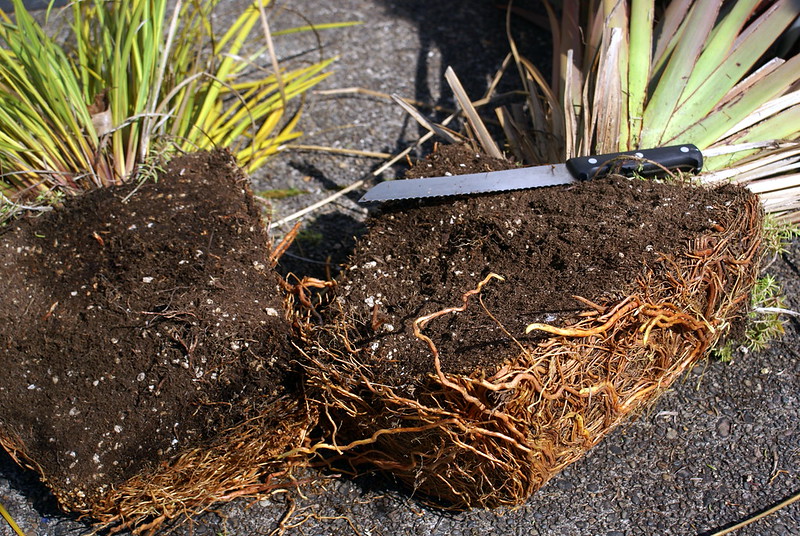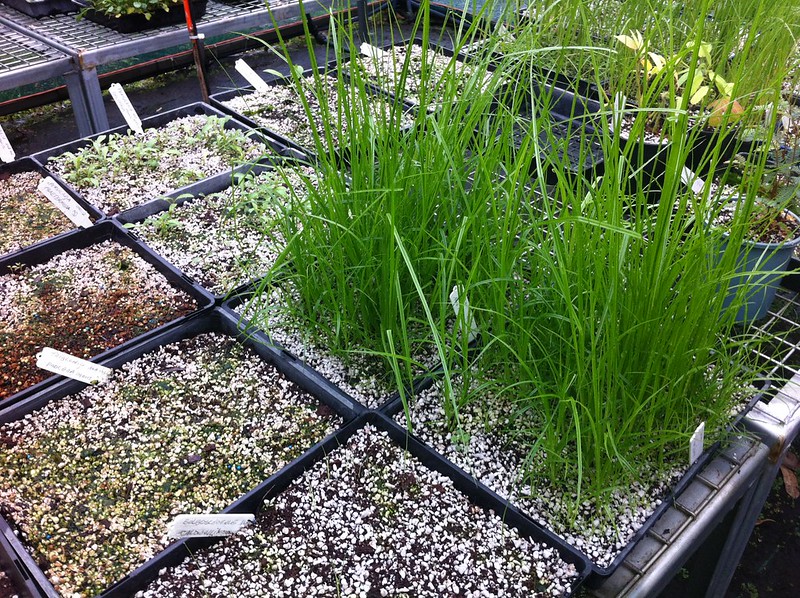Ornamental grasses are some of the best plants to bring a sense of drama and height to your garden. The wide variety of colors, sizes, and flowerheads make these perennials easy to incorporate into any established garden. Propagating ornamental grass is as easy as growing lawn grass seed. Some types of ornamental grasses are prolific reseeders. Often just relocating one of many tiny seedlings in the early spring is all that is needed to multiply your stock. Other types have been bred to be sterile, which limits their spread, and can be propagated by division. Whether you are growing grasses from seed or division, any gardener can successfully multiply their plant stock with very little effort.

Photo by Jacki Dougan
Methods To Propagate Ornamental Grasses
Ornamental grasses are no more difficult to start by seed than lawn grass. As long as the seed is fully ripened and stored in a dry, dark location, it will germinate without extra stratification. Ornamental grass seed is best started before the last frost is expected in spring. The plants are often large enough to grow in their permanent positions by mid-summer and will have plenty of time to establish before winter. Evergreen grasses can be started later in the summer and left in pots to plant in the spring.
Division is the other method to propagate ornamental grasses. The timing will depend on whether you are dividing a warm-season, cool-season, or evergreen grass. Evergreen grasses respond to division best early in the spring (or late winter in warm climates). Warm-season grasses begin growing later in the season and should be divided in early summer, just as the new growth is appearing. You can divide cool-season grasses in spring or early fall, when they are actively growing.
What You Need To Propagate Ornamental Grasses
Ordinary seed-starting equipment is needed to sow ornamental grasses. Most types of grasses will germinate without the use of heat mats for bottom heating. A flat tray less than 3 inches deep is best for seed germination. Use a premixed, sterile, peat-free seeding mix.

Photo by Doug Beckers, unedited, Flickr, Copyright CC BY-SA 2.0
To divide grasses, you will need a sturdy spade for digging out the rootball. One or two pitchforks for prying the root divisions apart are very handy. Use a small handsaw or garden knife to cut the rootball if it is very dense.
Best Time To Propagate Ornamental Grasses
Cool-season grasses (e.g., fescue, blue oat grass, tufted hair grass, and autumn moor grass) should be divided in spring and fall. Divide evergreen grasses (e.g., sedge, mondo grass, and sweet flag) in late winter or early spring. Warm-season grasses (e.g., maiden grass, blue grass, fountain grass and switchgrass) should be divided when active growth starts, which can be as late as early summer for some varieties.
Grass seeds can be started almost any time of the year. If you would like to start seeds in the fall or winter, you will need an unheated, but protected location to grow small plants. Seedlings started late in the winter are generally large enough to place out in the garden by sometime in the summer. Seeds started in the summer or fall will need protection over the winter, but not a heated or lighted space.
Steps To Propagate Ornamental Grasses
Step 1 - Dig up the grass you wish to divide, extracting as much of the rootball as possible. Extra large grasses do not need to be extracted, as small chunks can be removed from the parent plant.
Step 2 - Place the plant and rootball on a tarp or other firm surface that is easily cleaned.
Step 3 - Take a sharp spade, hand saw or two pitchforks held back to back to cut or pry apart smaller chunks of the rootball. The best divisions have a dense root system. Do not worry about damage to the top growth at this point.
Step 4 - Dig a hole twice as wide and as deep as the rootball and set the base of the division even with the soil level.
Step 5 - Backfill the hole and gently firm down the soil over the rootball, making sure that the top of the rootball is level with the ground.
Step 6 - Water the new plant in, concentrating most of the water around the root zone to get rid of any air gaps around the roots.
Step 7 - Add a 2-3-inch layer of organic mulch in a 10-inch radius from the base of the grass.
Caring For Young Ornamental Grasses After Transplanting
Transplanted ornamental grasses will need to be treated as if they are newly planted. Often the top growth will show signs of stress and flagging until the plant can reestablish its root system. Any tattered top growth can be sheared back to within 4-6 inches of the soil. Water the plants 2-3 times a week with a total of 1 inch of water. If you garden in a location with summer rains, be sure to include natural precipitation in the weekly total. The appearance of fresh growth indicates that your new plant is settling in successfully.
 |
Author Robbin Small - Published 8-13-2023 |
